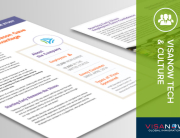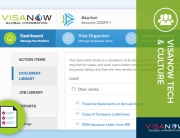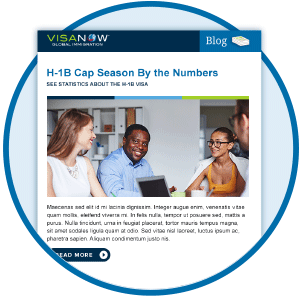Here at VISANOW, we encounter many situations in which companies sponsor employees who are applying for a work visa from a country outside the U.S. In these cases, we like to make sure that employees know about the special steps needed to obtain their visa that differ from the process of applying within the U.S.
1. Check your visa stamp expiration date
A valid visa stamp is generally required to enter the U.S. unless you are a Canadian citizen in possession of a Canadian passport. If you are applying for a work visa from outside of the U.S., you may need to have a petition submitted by your employer to United States Citizenship & Immigration Services (USCIS) before you are able to obtain a visa stamp. A petition is a series of forms that is filed with the government to determine a non-citizen’s eligibility to enter the U.S. Visa types that require a petition to be submitted and approved include: H-1B, H-2B, H-3, K-1, K-3, L-1 (non-blanket), O-1, P-1, P-2, Q-1, or R-1. Spouses and children who qualify for dependent non-immigrant classification of a temporary worker do not require a petition to be submitted, and can apply directly at a U.S. consulate for a visa.
2. Know what the DS-160 form is.
The DS-160, titled Online Nonimmigrant Visa Application form, is used when preparing for temporary travel to the United States. This form, composed of primarily biographical information, is submitted electronically to the Department of State, and consular officers use the information entered on the form to process a visa application. This form is very detailed and quite lengthy—the U.S. Department of State’s website estimates a “time burden” of 75 minutes.
3. Schedule your consular appointment ahead of time.
You’ll want to check the wait time to receive an interview appointment at the consulate of your choice. These times vary from consulate to consulate and fluctuate with time as well. You can locate the consulate at which you plan on attending your appointment here, which will direct you to the respective consulate’s website. Each U.S. consulate is different, and the associated processing fee to schedule the appointment varies as well. You can find typical interview wait times on this page.
4. Know what Section 221(g) of the Immigration and Nationality Act is.
If a consular officer deems that you have not provided enough information or documents at your appointment, or if additional processing of your case is required, Section 221(g) of the Immigration and Nationality Act may be invoked. This will put a hold on your case until your eligibility for your prospective visa can be determined. After the 221(g) is issued, the consulate will provide you with instructions on how to proceed.
5. Know that VISANOW can help you out further!
In addition to processing visas that are applied for outside of the U.S., VISANOW can help even more if a “Consular Processing” case is opened. Under this case type, VISANOW will fill out and submit the DS-160 for you, help prepare you for your consular interview, and can represent you as your attorney and communicate with the consulate on your behalf, in the case that a 221(g) is issued or other questions or delays arise.







